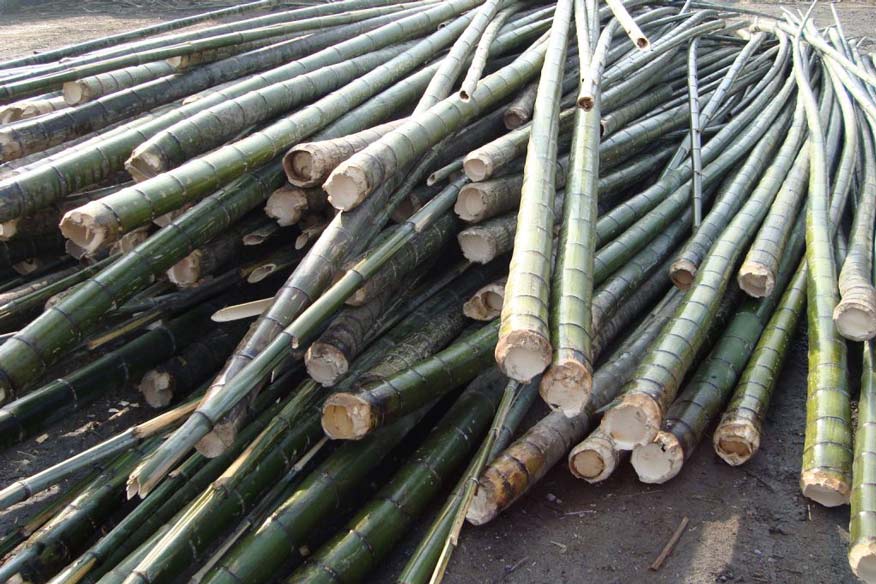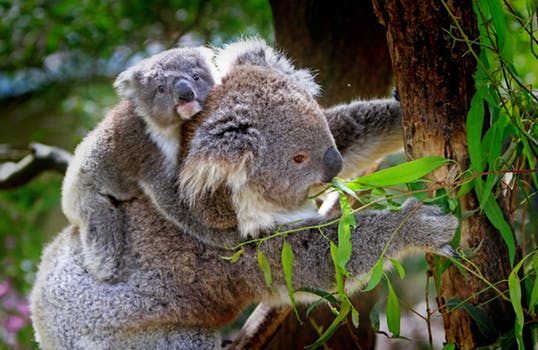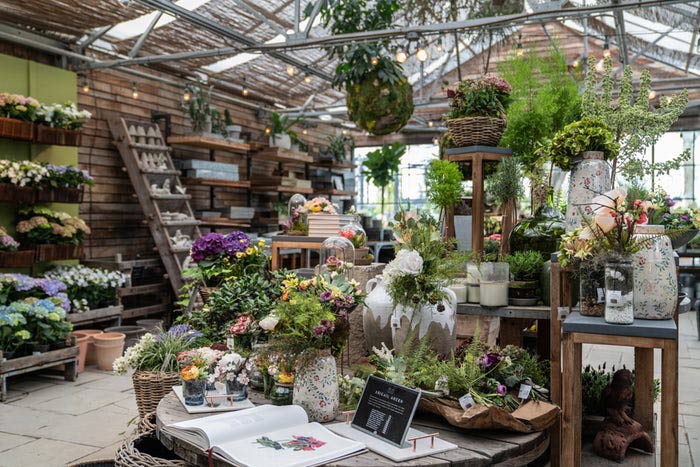Gardens are a common way to spruce up the landscape around your house – but how do set yours apart? You could make a creative planter by repurposing an old wagon or other antiques. Box gardens have also become a common trend for homes with limited space for expansive gardens. Many overlook this possibility, but the inclusion of unique plants can also differentiate your garden!
Summertime is fast approaching, and for many of us, that means a season of entertaining in our backyards, whether it’s a potluck, a barbeque, or even a fireworks display.
If you like entertaining in your backyard, then you’re probably looking for ways to make the space look exciting and unique for your guests (and yourself). For some, this means investing in new patio furniture or repainting the fences. Alternatively, growing some unique plants that can really transform the space for the green-fingered among us.
Whether you are spicing up your yard for a personal vegetable garden or for a summertime cookout, it can be hard to decide on what to plant. That’s why we’ve put together a list of some of the unique plants that can be grown in North America. You’ll have the coolest plants in town with a few of these additions!
1. Bamboo Plant
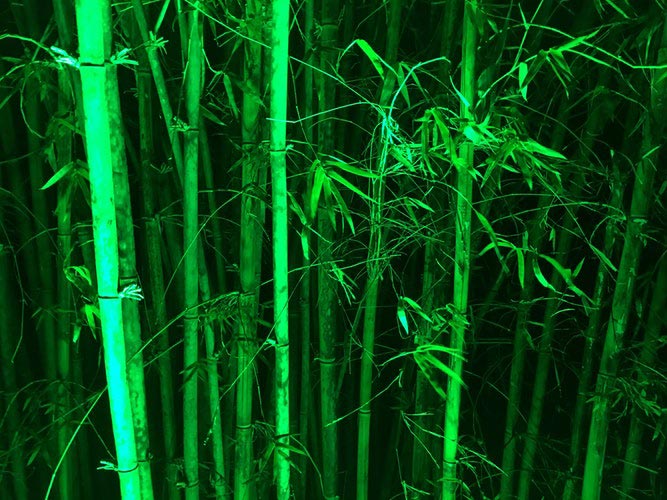
Not only is this tall grass incredibly eye-catching, but it’s also convenient for people in the US and offers a multitude of benefits to the gardener. While people are first drawn to the lush green leaves and the thick stalks, the bamboo’s side benefits are actually much more intriguing.
Why plant bamboo in your garden?
The bamboo grass is incredibly versatile and can be grown in almost any environment, which means Americans from New Jersey to New Mexico can enjoy the bamboo plant and all it has to offer. Even if the soil in your backyard is poor (or perhaps infertile), bamboo plants can grow there and help regenerate the soil so that you can grow more unique plants there in the future.
The bamboo plant’s rapid growth makes it perfect for acting as a natural screen to section off your backyard into several areas (i.e., vegetable garden, pool, patio) or even to create a semi-secret hideaway for the kids.
Another awesome benefit to planting bamboo in your garden is using the harvested material to do some major crafting. If you have kids, you can use this to keep them entertained throughout the school holidays. If you don’t have kids, you could donate them to your local school or community center for their craft projects.
Some cool facts about the unique bamboo plant
- All members of a particular bamboo species will flower at the same time, regardless of environmental factors.
- Bamboo can counteract deadly toxins in the air and the soil, making both safer for humans and animals.
- Some animals use the bamboo plant’s fermented sap too, and it’s just as good as you’re expecting.
- Bamboo can create a multitude of useful items, from clothing to tools to floors to transportation.
- One bamboo species can grow 35 inches per day, whilst another reaches maturity in just 90 days.
2. Patio Plum
It’s a bit a strange name for a plant that is neither plum nor capable of growing through a patio. This unique little plant is ideal for the wannabe vegetable grower with limited space. It’s a dwarf tomato plant exhibited at the Chelsea Flower Show in 2017, and it grows the tomatoes in small grape-like clusters.
3. California Firecracker
No, we’re not talking about the many, many sports teams that share the name.
This hot pink flower can grow up to 2 ft in the early summer months, and they also tend to attract hummingbirds, thanks to their bright flowers and their prominent positions.
While the exotic plant may be native to the Californian channel islands, that doesn’t mean it isn’t unusual in other US states.
4. Green Passion
It’s an apt name for any keen gardener, but this unique plant is a double flower with all green petals. It can reach heights of 5 ft 9”, making it perfect for anyone looking for flowers to run up the fences in their gardens.
5. Bat Flower
Called the bat flower because of its black coloring and its bat-shaped flowers, this tropical plant comes straight from Southeast Asia. Mostly found in Thailand, the bat flower can grow up to 3 ft in height and has “whiskers” that can grow to 28 inches long.
It also comes in a white version with purple veins and can grow up to 4 ft.
6. Cupcake Blush
While it might sound more like a new flavor of ice cream or shade of lipstick, this delightful daisy-like flower has distinct petal formations that set it apart from the other species of the cosmos plant. The petals, which are all spread out from the center, are fused to create a flower that looks like a cupcake case.
Why is it called Blush? Well, it has a delicate shade of pink at the base of the petals, evoking the blush on our cheeks.
7. Harlequin Glorybower
Yes, this does sound like the name of a sexual position that you’d hear on a How I Met Your Mother re-run, but don’t let that put you off. This beautiful shrub can adapt to almost any climate in the US and grow up to 12 ft.
Also, with its trademark pink petals and blue seeds, this unique plant is definitely not afraid of the limelight.
8. Goldfinger Flowers
The bright-colored and tubular-shaped flowers on this shrub are great for attracting hummingbirds to your garden. As a bonus, the shrub, which can grow to 4 ft tall, is highly resistant to disease and pests. This means it’s super easy to care for, even for novice gardeners.
9. Eucalyptus Tree
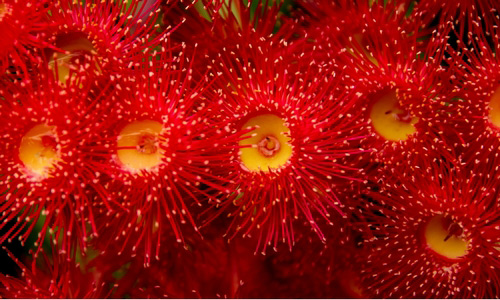
Eucalyptus trees in bloom are the perfect accompaniment for your summer soiree because the flowers look like a miniature fireworks display.
Why? Because the flowers, much like dandelions, don’t have petals. Instead, they have hundreds of brightly colored stamens surrounding the bud.
Square stems and rare leaf patterns are also uncommon features that are found in the.
Why plant eucalyptus trees in your garden?
The cineole found in eucalyptus trees is a natural insect repellent. It’s designed to discourage bugs from eating the plant but will also help keep your garden free from unwanted guests. To be clear, we mean insects, not Jan from your office who heard you talking about a barbeque and invited herself along.
Eucalyptus has also long been used in medicine, from disinfecting hospitals to healing wounds to treating respiratory illnesses. Although we obviously recommend that you consult a medical professional about any illnesses or injuries, it’s nice to know that you have a natural remedy for small cuts on hand.
Some cool facts about the eucalyptus tree
- The word eucalyptus comes from the Latin “EU,” meaning from, and the Greek “Kryptos,” meaning covered, which describes the seedpod.
- The eucalyptus tree can reduce wastewater issues by filtering toxins from the water we use to grow crops, making our agricultural practices much safer.
- Eucalyptus can be used to make many items that are beneficial to humans, from sun lotion to flooring to didgeridoos to sweets.
- Eucalyptus can grow to maturity in less than ten years, compared with almost 40 years for most humans hardwoods.
- Koalas love eating it, as you can see from the photo above.
- Eucalyptus trees help prevent malaria by naturally reducing the local mosquito population. They do this in two ways: soaking up the stagnant water that mosquitoes need to breed in and producing the insect-repelling cineole, which we mentioned above.
10. Sugarbushes
There are roughly 80 types of this South African plant that can grow under the US’s right conditions. According to South African culture, the protea flower represents hope and change, making them a great symbol of luck and future happiness.
11. Devil’s Tongue
As part of a family of plants that includes that notorious corpse flower, you may be slightly worried about planting the Devil’s Tongue in your garden. Let us reassure you that this tropical beauty does not share the same stinky attributes as its cousin.
Judge this pale pink plant, named because it looks like someone sticking out their tongue, on its own merits. You wouldn’t want someone to judge you based on your relatives.
12. Guinea Hen Flowers
These are one of the most curious species of springtime lilies, owing mostly to the distinct dotty pattern on their petals, which resemble the guinea hen’s feathers.
They’re a perfect addition to any flower bed, but they’re sure to interest humans and insects alike, so place them near the front. Their slim profile can also be tucked in between other plants to fill in space.
13. Sensitive Plant
If you’re picturing a houseplant wiping away tears as it watches Steel Magnolias, then you’ll be disappointed, but this pink flower does exhibit some surprisingly human behaviors.
When you stroke this unique plant, which can grow to over 30 inches tall, it droops noticeably. If you hit it, as in the video above, it will retreat down into its container. It was so shocking that people previously thought it must have animal-esque nerves and muscles.
Why grow unique plants at all?
A conversation starter
One of the coolest reasons to grow unique plants is that they start a conversation. There’s nothing wrong with a perfectly trimmed lawn and a rose garden – aside from the Stepford implications – but the most anyone can be, your garden looks neat and tidy.
More interesting plants will encourage people to learn more about the plants and, by extension, you. They’ll want to know what the plant is, why you chose it, and if there’s any backstory behind it. Maybe you went traveling after college and smuggled* a bamboo clipping back to remind you of your time in China, or maybe you emigrated from Australia and wanted to bring a Lil’ piece of Down Under with you in the form of a eucalyptus plant.
*A note from the Greener Living Blog lawyers: We do not endorse smuggling plants into the US. It’s highly illegal and can mess with the ecosystem unless properly regulated. Buy your tropical plants from licensed vendors in America.
Furthermore, make sure that you have adequately researched any plants before disposing of them or their byproducts. Invasive species can take hold from a single seed. You wouldn’t want to be responsible for an invasive plant taking over a local ecosystem! Unique plants are great for controlled gardens – just make sure they stay there.
Not every interesting plant is harmful to the local environment. These recommendations are focused on design, versatility, and other impacts. Be sure to do your research before expanding your garden!
Increasing Diversity
Diversity is important in all aspects of our lives, from the places where we work to the media that we consume, but it’s also important in our gardens. Thanks to the majority of people buying just a small selection of plants, we’re losing a lot of diversity in our gardens, which has been detrimental to all the ecosystems in the USA.
Some of the most damaging aspects of a lack of biodiversity include:
- Crops that are more susceptible to diseases
- More food instability
- Freshwater shortages
- Increased pollution
- Soil infertility
- Climate instability
- Loss of insect populations (including bees) that are necessary to our ecosystem
Geez, I’m guessing that no one wants that… right?
Our top tips for buying unique plants
If you’re keen to increase plant diversity and get unique plants in your garden, then here are our top tips:
- Find someone knowledgeable: Whether you want to find a plant that will suit your lifestyle or even learn more about how to grow the plant, you should consult someone at your local nursery or garden center. They’ll have the love and knowledge of plants to tell you all you need to know.
- Choose ones that are suited to your life: When buying plants, you need to select ones that will fit in with your existing backyard and lifestyle. If you live in a dry climate, then you’d be better off getting a plant that isn’t used to a lot of humidity. On the other hand, if you travel a lot, you’d probably want a low maintenance plant that doesn’t need watering every day.
So that’s about it for this green-fingered look into the coolest plants for you to grow – but now we’d like to hear from you.
What do you think of our picks for the most interesting plants that you can grow at home? Do you have any of these in your garden? Did we miss any plants off the list?
Let us know all that and more in the comments section below. Who knows, you could inspire our next blog post.
Last Updated: 1/11/2022

